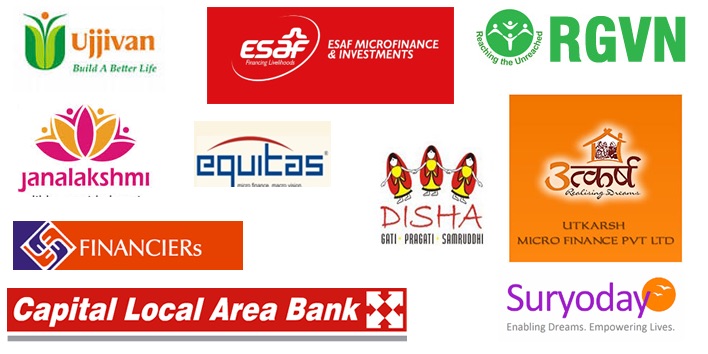Small Finance Banks: These banks also have been established with an aim of financial inclusion “to sections of the economy not being served by other banks, such as small business units, small and marginal farmers, micro and small industries and unorganised sector entities.” These banks were expected to provide an institutional mechanism for promoting rural and semi urban savings and extending credit for viable economic activities in the local areas.
Small Finance Banks
In July 2014,draft guidelines for small finance banks, seeking comments from interested entities and the general public was released by RBI. After receiving comments and submissions from public, the final guidelines were released in November 2014 with the instructions that interested parties were to submit applications before 16 January 2015.
Thereafter, in February 2015, RBI released the list of 72 entities which had applied for a small finance bank license. After a due screening of these applications by an External Advisory Committee headed by Mrs. Usha Thorat, in September 2015, RBI had issued 10 provisional licences to entities, which were required to convert themselves in Small Finance Banks within one year. Eight among them were already existing micro finance NBFCs emphasizing the focus towards financial inclusion and Best Bank Promotions These entities are :-
- Ujjivan Small Finance Bank
- Jana Small Finance Bank
- Equitas Small Finance Bank
- AU Small Finance Bank
- Capital Small Finance Bank
- Fincare Small Finance Bank
- ESAF Small Finance Bank
- North East Small Finance Bank
- Suryoday Small Finance Bank
- Utkarsh Small Finance Bank
Salient Regulatory features of Small Finance Banks
- These banks can be promoted by individuals, corporate houses, trusts or societies.
- Promoters should have 10 years’ experience in banking and finance and they should have a capital stake of 40% of equity which must be brought down to 26% over a period of 12 years.
- Joint ventures are not permitted. Foreign shareholding will be allowed in these banks as per the Foreign Direct Investment rules in private banks in India.
- Existing Non-banking Financial Companies, NBFCs, Micro Finance Institutions (MFI) and Local Area Banks (LAB)may convert themselves to become small finance banks by making applications to RBI.
- These Small Finance Banks need to be registered as Public Limited Companies under The Companies Act, 2013 and Reserve Bank of India Act, 1934, Banking Regulation Act, 1949 and other relevant statutes, are applicable to them.
- The banks will not be restricted to any region. 75% of its Net Credit should be lent to Priority Sector and 50% of its loans should be in the range of up to Rs. 25 lakhs.
- The Small Payment Banks should have capital of at least Rs. 100 crore.
- At net worth of Rs. 500 crore, listing will be mandatory within three years.
- Those Small finance banks having net worth of below Rs.500 crore could also get their shares listed voluntarily
The scope of business of a small finance bank, include “basic banking activities of acceptance of deposits and lending to unserved and underserved sections including small business units, small and marginal farmers, micro and small industries and unorganised sector entities”. With prior approval of RBI it can undertake risk less activities such as distribution of mutual fund units, insurance products, pension products, etc. after complying with the requirements of the sectoral regulator for such products. The small finance bank can also become a Category II Authorised Dealer in foreign exchange business for its clients’ requirements. It cannot set up subsidiaries to undertake non-banking financial services activities.
Recommended

